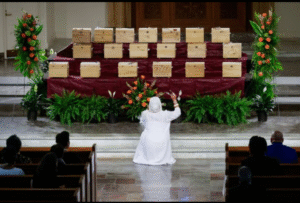
The Return of the Forgotten: Repatriation and Reburial of 19 African Americans in New Orleans
Introduction
Historical Context
The Repatriation Effort
The Memorial Service

Scientific Racism and Its Legacy
The practice of using human remains for pseudoscientific research is a stark example of scientific racism—a term that refers to the misuse of science to justify racial hierarchies and discrimination. Phrenology, which gained popularity in the 19th century, was one such pseudoscience that falsely claimed to determine intelligence and character based on skull measurements. These studies were not conducted with the consent of the individuals involved and were rooted in a desire to legitimize racial inequality.
Dr. Eva Baham emphasized that “all kinds of experiments were done on Black bodies living and dead,” highlighting the systemic exploitation and objectification of Black individuals in the name of science. This legacy continues to impact the African American community, necessitating ongoing efforts to confront and rectify historical injustices.
The Role of Dillard University
Dillard University played a central role in the repatriation and reburial process, demonstrating the institution’s commitment to social justice and historical accountability. As a historically Black university, Dillard has long been a beacon of advocacy and empowerment for the African American community. The university’s leadership, particularly Monique Guillory and Dr. Eva Baham, exemplified the importance of academic institutions in addressing historical wrongs and promoting healing.
The university’s efforts also included outreach to identify potential descendants of the 19 individuals. While no direct descendants were located, the initiative underscored the importance of genealogical research and community engagement in the process of repatriation.
Community and Cultural Significance
The memorial service was not only an academic and institutional event but also a deeply cultural and communal one. The inclusion of a jazz funeral, a tradition that dates back to the 19th century in New Orleans, connected the ceremony to the
Leave a Reply